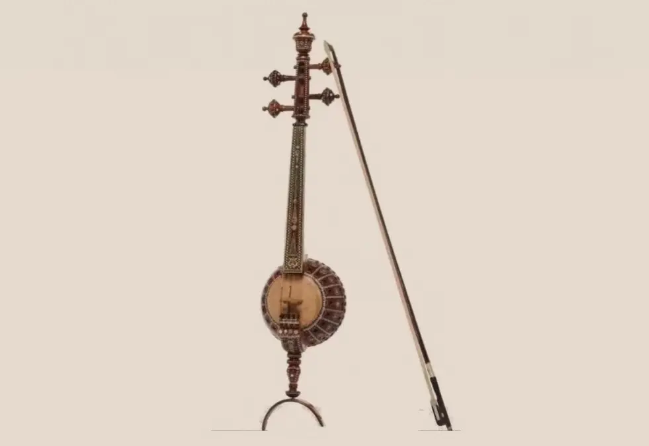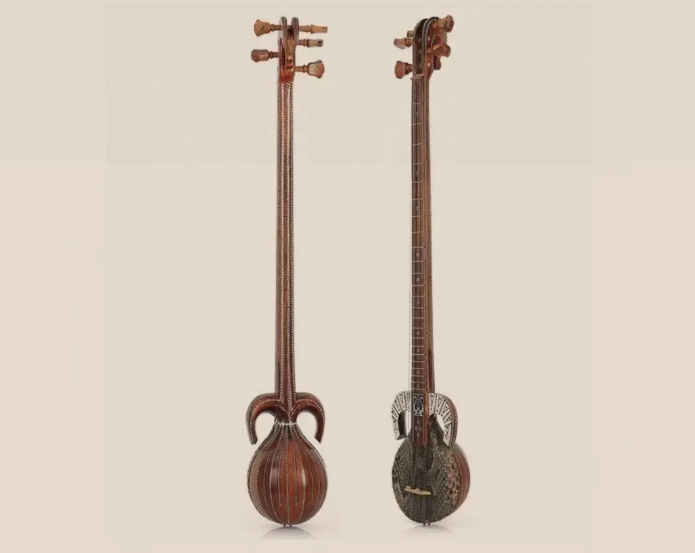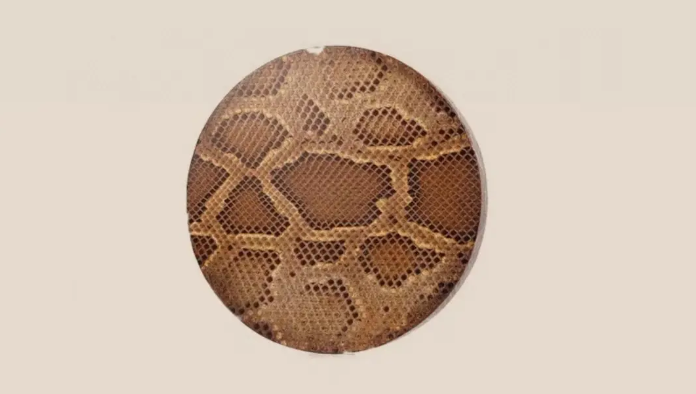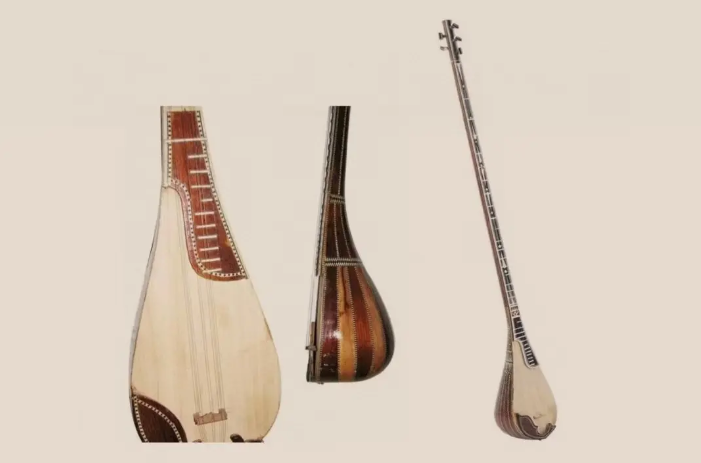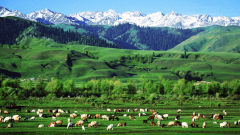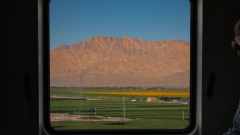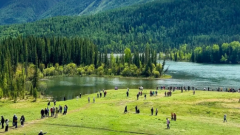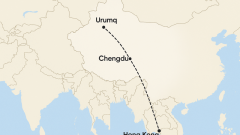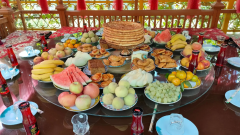Xinjiang, located on China’s far western frontier, is not only a land of deserts, snow-capped mountains, and Silk Road heritage, but also the birthplace of vibrant music and dance traditions. At the heart of Uyghur culture, music and dance serve as living expressions of history, faith, and joy. From the legendary Muqam suites to energetic meshrep gatherings, these traditions are more than entertainment—they embody communal spirit, storytelling, and resilience. For travelers, experiencing Uyghur music and dance offers a rare window into the soul of Xinjiang, where ancient rhythms continue to thrive in modern life.
The Historical Roots of Uyghur Music
Uyghur music has a history spanning thousands of years, deeply shaped by the Silk Road. As caravans traveled between China, Central Asia, Persia, and Europe, musical instruments and melodies flowed across cultures. Xinjiang became a melting pot of influences—Chinese pentatonic scales blending with Persian rhythms and Arabic instruments.
Ancient murals in Dunhuang caves and archaeological finds at sites like Turpan suggest that the ancestors of the Uyghurs already had a rich musical life. The music carried both religious and secular significance, accompanying ceremonies, weddings, and festivals.
The Twelve Muqam: Crown Jewel of Uyghur Music
No discussion of Uyghur music is complete without mentioning the Twelve Muqam—a monumental musical tradition recognized by UNESCO as part of the world’s Intangible Cultural Heritage.
The Muqam is not a single piece of music but a vast collection of suites, each blending song, dance, and instrumental sections. One performance can last hours, weaving together poetic lyrics, soulful ballads, and lively dances.
The Muqam reflects themes of love, morality, philosophy, and daily life, often drawing from Uyghur classical poetry. It is performed with instruments like the rawap (a long-necked lute), tambur, dutar, and hand drums such as the dap.
For the Uyghurs, the Muqam is not just art—it is memory, identity, and history passed through generations.
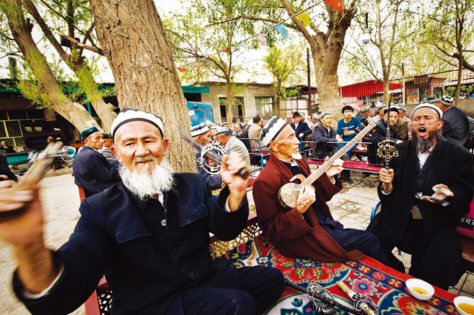
Instruments of Xinjiang: Voices of the Desert
The richness of Uyghur music is inseparable from its instruments. Some of the most iconic include:
-
Rawap – A plucked lute with a deep, resonant sound, often carved from mulberry wood.
-
Dutar – A two-stringed instrument producing delicate, lyrical tones.
-
Dap – A large frame drum, central to both music and dance.
-
Ghijak – A bowed instrument that adds a haunting, expressive quality.
-
Tambur – A long-necked string instrument used in both classical and folk music.
Each instrument carries symbolic meaning and reflects the nomadic and agrarian lifestyle of the Uyghurs.
Uyghur Dance: Expressing Joy Through Movement
While music stirs the heart, dance brings the body into harmony with rhythm. Uyghur dance is known for its elegance, energy, and storytelling.
-
Hand Movements – The most distinctive feature of Uyghur dance. Gentle yet precise, they mimic everyday life, nature, and emotions.
-
Head Tilts and Eye Expressions – Dancers use subtle expressions to convey charm, humor, or flirtation.
-
Costumes – Brightly colored dresses, embroidered vests, and flowing skirts enhance the visual beauty. Women often wear small flowered caps known as doppa.
Common dance occasions include weddings, festivals, and meshrep gatherings. For Uyghurs, dance is inseparable from life—it is how joy and togetherness are expressed.
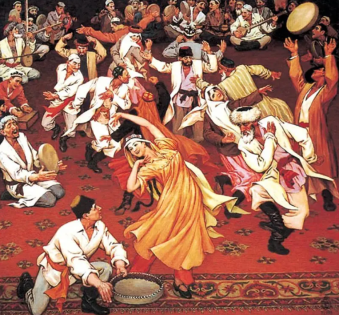
Meshrep: The Communal Celebration
The meshrep is one of the most iconic Uyghur cultural traditions. It is a community gathering that combines music, dance, poetry, food, and social discussion.
Traditionally, meshreps served as a way for elders to guide youth, enforce moral values, and celebrate communal bonds. Today, meshreps remain vibrant events where the dap drum beats set the rhythm for energetic circle dances, and everyone—young and old—participates.
For visitors, joining a meshrep is an unforgettable way to experience Uyghur hospitality and cultural vitality.
Modern Adaptations and Global Recognition
While deeply traditional, Uyghur music and dance have also adapted to modern times. Musicians blend classical Muqam melodies with contemporary pop, jazz, and even electronic beats. Internationally, Uyghur artists have performed at cultural festivals, bringing Xinjiang’s rhythms to global audiences.
In Xinjiang itself, cultural shows are often staged in places like Urumqi, Kashgar, and Turpan for travelers. Restaurants feature live performances where audiences can enjoy Uyghur food while watching dancers in colorful costumes.
Experiencing Uyghur Music and Dance as a Traveler
For travelers exploring Xinjiang, there are many ways to experience Uyghur music and dance:
-
Kashgar Old Town – Street performers and teahouses often feature traditional songs and dances.
-
Urumqi International Grand Bazaar – A hub for cultural performances and musical souvenirs.
-
Festivals – During events like the Corban Festival or Noruz (Spring Festival), public celebrations include music and dance.
-
Cultural Theaters – Dedicated shows in Urumqi or Kashgar showcase the Twelve Muqam and folk dances.
-
Local Gatherings – In villages, travelers may be invited to weddings or meshreps, where music and dance are central.
These encounters allow visitors to go beyond sightseeing, connecting with the living traditions of Xinjiang.
Music and Dance as the Soul of Uyghur Identity
In a region known for its diverse landscapes and ethnic groups, Uyghur music and dance stand as symbols of cultural resilience. They are more than art forms—they are collective memory, spiritual strength, and an enduring way of life.
As long as the dap drum beats and the rawap strings echo across the desert, the Uyghur soul will continue to find expression in rhythm and movement.
Conclusion
Music and dance in Xinjiang are far more than entertainment—they are the heartbeat of Uyghur culture. Rooted in Silk Road history, enriched by diverse influences, and expressed through the powerful traditions of the Muqam, the rawap, and graceful dances, these art forms embody centuries of heritage. For travelers, witnessing Uyghur performances is to glimpse the living spirit of Xinjiang: joyful, expressive, and eternal.



